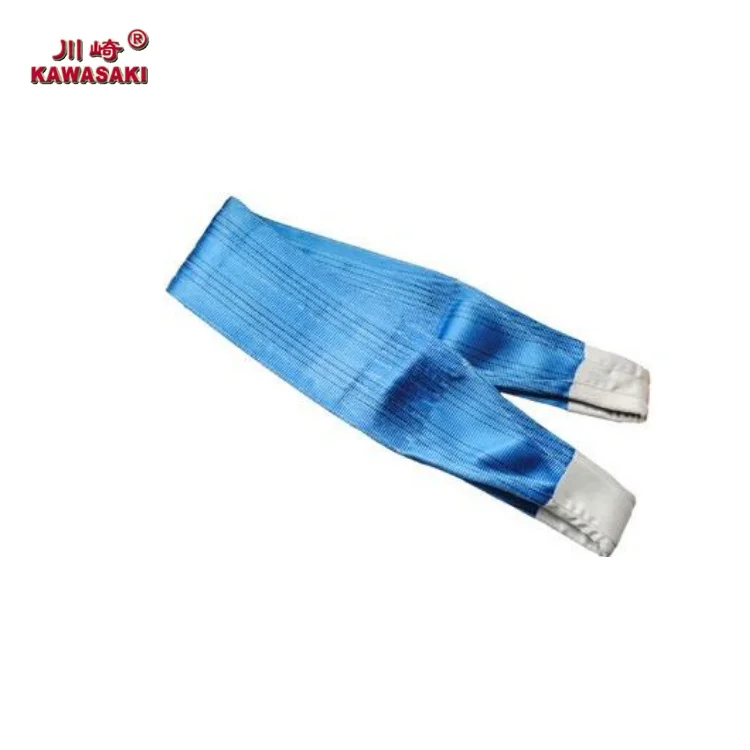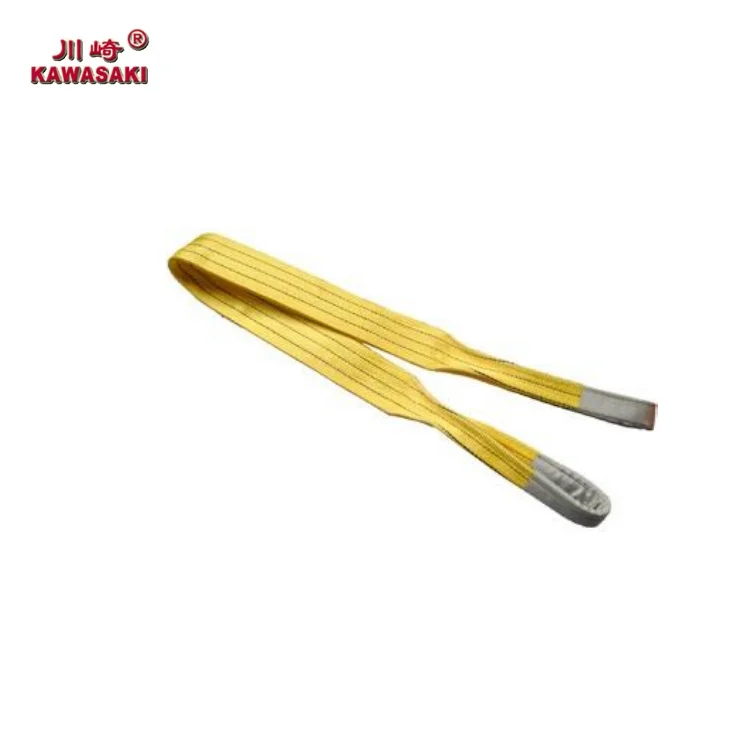Picking the right lifting gear is vital for safety, productivity, and protecting loads during material handling. Webbing slings and round slings have unique benefits based on their makeup, strength, and intended use. Webbing slings, made from tough polyester, are flexible and gentle, perfect for fragile or flat items in construction and shipping. Round slings, built with strong fibers and protective covers, work best for heavy or oddly shaped objects. This guide compares their traits, uses, and differences, along with expert advice from APOLLO’s certified products, to help you decide which sling fits your needs.
What Are the Key Features of Webbing Slings?
Material and Strength
Webbing slings are made from synthetic fibers, mainly polyester, because of their strength and minimal stretch. These slings meet safety standards like EN 1492-1:2000, ensuring reliability. Polyester resists water, chemicals, and mold, making it durable in various conditions. Reinforced loops add strength, allowing them to lift loads safely.
Flexibility and Light Build
Webbing slings bend easily to fit the shape of the load. This prevents damage to delicate or uneven items. Their lightweight makes them easy to carry and use compared to metal slings.

Where Are Webbing Slings Typically Used?
Lifting Flat or Fragile Items
These slings are great for delicate loads. Their smooth surface avoids scratches on glass, polished metal, or painted parts. This makes them useful in construction, factories, and transport where protecting the load matters.
Best for Quick or Repeated Jobs
Because they are simple to set up, webbing slings suit short projects or tasks needing frequent lifts. Their light design reduces worker tiredness during repetitive use while keeping efficiency high.
How Do Round Slings Stand Out?
Build and Materials
Round slings have a loop of strong polyester yarn inside a tough outer sleeve. This spreads the weight evenly, boosting strength and lifespan. The sleeve also guards against wear and weather.
High Weight Capacity
Round slings can handle much heavier loads than webbing slings while staying compact. This makes them ideal for industrial jobs requiring powerful lifting.
What Are Common Uses for Round Slings?
Moving Heavy or Cylindrical Objects
Round slings work well with pipes, barrels, or machine parts. Their circular shape grips these items firmly, keeping them steady during lifts.
Built for Tough, Long-Term Jobs
Made to last, round slings perform well in harsh settings. Their resistance to damage suits industries like shipyards, oil plants, and heavy manufacturing.
Why Pick Webbing or Round Slings for Specific Jobs?
Resistance to Wear and Sunlight
Webbing slings resist abrasion moderately but can weaken with prolonged sun exposure. Round slings, with their protective sleeves, handle wear better and block UV rays.
Affordable for Everyday Tasks
For standard lifts without extreme weight or long-term use, webbing slings offer a budget-friendly choice without sacrificing safety or performance.
Strong but Light
Round slings have an excellent strength-to-weight ratio. Their slim design allows lifting heavy loads without bulk.
Less Damage to Loads
The sleeve on round slings reduces wear on both the sling and the load. This helps when moving heavy but delicate items.
How Do Webbing and Round Slings Compare for Various Uses?
Differences in Materials and Design
Both use polyester, but webbing slings have flat woven fabric for flexibility. Round slings use looped yarn in sleeves for extra durability.
Variations in Strength and Safety
Round slings usually hold more weight due to their design. Both types follow strict safety rules, with different safety factors for various needs.
When to Use Each Type
Choose webbing slings for delicate surfaces or short-term jobs. Pick round slings for heavy or long-term tasks in tough conditions.
For reliable lifting solutions, APOLLO provides high-quality products designed for precision and customer satisfaction.
APOLLO’s Product Recommendations
APOLLO supplies tough webbing and round slings for lifting. Webbing slings, made from pure polyester, are flexible and gentle for fragile loads. Round slings offer more power for heavy-duty jobs. Both meet EN 1492-1:2000 standards, ensuring safety in construction, shipping, and industry. This section explains their features and best uses to help you choose.
What Are APOLLO’s Webbing Sling Choices and Their Advantages?
Types of Webbing Slings from APOLLO
Webbing slings are key for safe lifting. APOLLO’s slings use 100% strong polyester for durability. They come in single or double layers, with sturdy loops for safety. Sizes range from 1m to 10m for different jobs. Safety ratings of 5:1, 6:1, and 7:1 meet EN 1492-1:2000 rules, fitting various industrial needs.
Best Uses for APOLLO’s Webbing Slings
These slings work well for flat or fragile items like glass or metal. Their soft touch prevents damage. They are also good for quick or repeated tasks due to their light build, easing worker strain. Fields like building and logistics gain from these traits.
How Are APOLLO’s Round Slings Different?
Types of Round Slings from APOLLO
Round slings solve heavy lifting challenges. Made with a loop of tough polyester yarn inside a protective sleeve, they spread weight evenly. This boosts strength and durability for demanding jobs.
Best Uses for APOLLO’s Round Slings
Round slings excel with cylindrical or awkward items like pipes. Their shape grips securely, ensuring stable lifts. Their toughness also suits long-term use in shipyards or heavy industry.
Picking the Right Sling with APOLLO
What to Think About When Choosing Between Webbing and Round Slings?
Consider the load’s weight, shape, and sensitivity. Webbing slings fit lighter, delicate items. Round slings handle heavier loads due to their strength. Environment matters too; round slings resist abrasion better with their sleeves.
How Does APOLLO Guarantee Quality and Safety?
APOLLO follows strict quality checks. Products are tested for strength, stability, and safety. They meet ISO9001 standards and have CE/GS safety certifications.
For custom lifting gear focused on durability and safety, APOLLO offers many options to match your needs.
FAQ
Q1: Can webbing slings lift heavy objects?
A: Webbing slings work for standard loads, but round slings are better for heavier items due to their higher capacity.
Q2: Do APOLLO’s webbing slings resist UV rays?
A: They have some UV resistance but should be stored out of sunlight to last longer.
Q3: How often should I check my sling?
A: Inspect before every use. Look for wear or damage to ensure safety.

